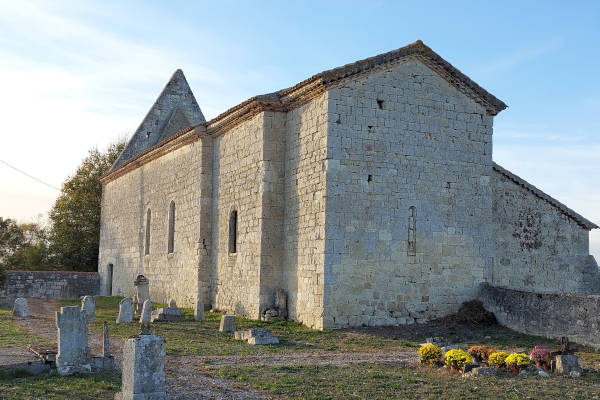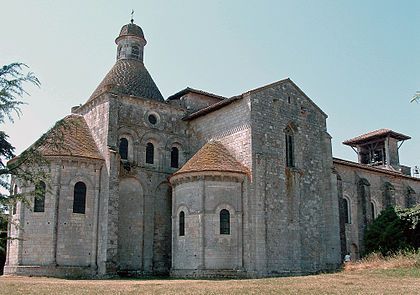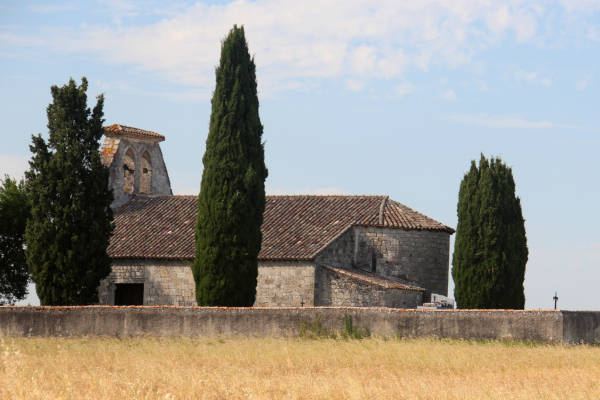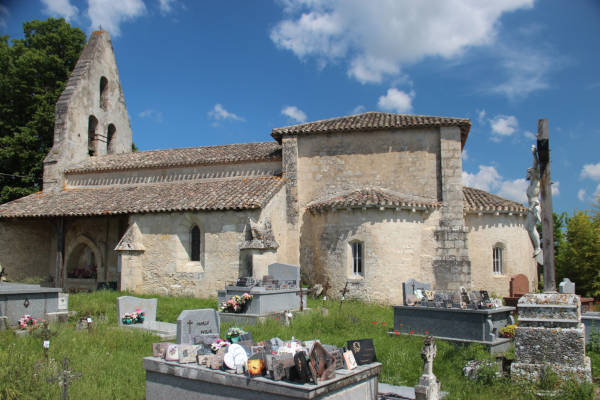
Church of Saint Sixte
The parish was a dependency of the Cauzac priory. In 1253 the rights of the Saint Maurin abbey over Saint Sixte and its annexe, Gandaille, were recognised by Guillaume, bishop of Agen.

The parish was a dependency of the Cauzac priory. In 1253 the rights of the Saint Maurin abbey over Saint Sixte and its annexe, Gandaille, were recognised by Guillaume, bishop of Agen.

This Romanesque church built of fine stones, laid in regular courses, has been recently restored. Only the nave is original.
In 1243 the abbot of Saint Maurin, Guillaume de Belpech, bought the tithe collection rights.

The origins of the fortified mill of Ferrussac go back to the first centuries of our era. Indeed, the church located on the estate (Notre Dame de Ferrussac) most probably rests on the foundations of a Gallo-Roman villa, as attested by the ac ending of the name.
This fortified mill was bought by the abbot of Saint Maurin in 1424; Jean I de Boville usurped its rights and, after arbitration in 1452, kept the estate. It remained in the de Boville family and was offered in 1606 to Bertrand I d’Audevars.

A village that has existed since antiquity according to some archaeological evidence, Moirax was a stopover for pilgrims on their way to Santiago de Compostela during the Middle Ages. In the 11th century, in 1049, one of the first Cluniac abbeys was founded here.
It became the Cluniac priory of Sainte-Marie and its church is now dedicated to Notre-Dame de Moirax.

This charming chapel was founded by Hunaud de Gavarret, the second Cluniac abbot of Moissac. It was subsequently given to the Saint-Maurin abbey. The illustrious patronage of Moissac could explain the decoration in this otherwise modest chapel, above all its sculpted capitals.
It is one of St Maurin abbey’s oldest possessions.

The origins of this church lie in the 11th century; abbot Laffont interpreted the Chi-Rho (see below) as the stone sign of the founder of the church, Hermann de Gavarrès.
The church originally consisted only of the sanctuary (triple chevet with a central tower), which forms the sole ancient part of this little church, according to G. Tholin. The foundations of the nave walls also date from the Middle Ages. The central tower is now lower than originally built.
Under the Ancien Régime, the parish, situated in the diocese of Cahors, came under the Benedictine abbey of Saint-Maurin.